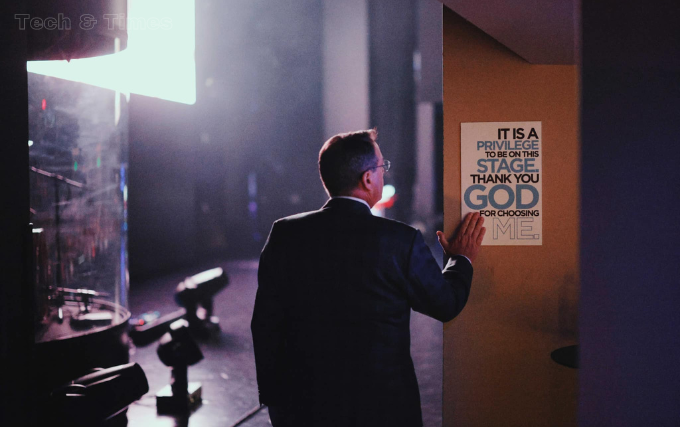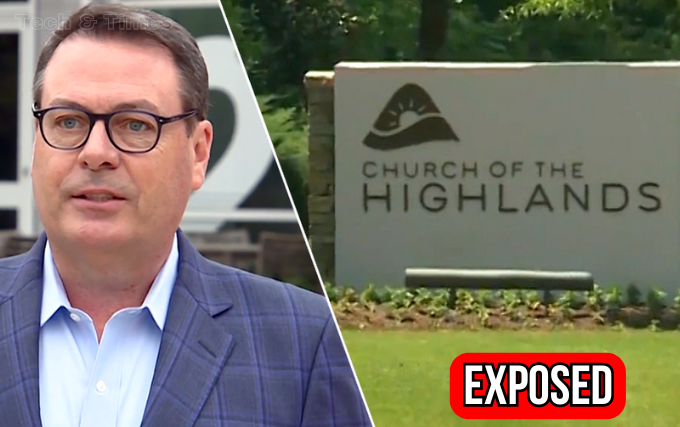The Church Of The Highlands Exposed has gained significant attention in recent years, drawing both praise and criticism. Known for its massive congregation and modern worship style, this church has become a focal point for discussions around megachurches and their influence. In this guide, we will take a deeper look into the Church of the Highlands, discussing its history, leadership, and some of the controversies surrounding it. Whether you are curious about the church’s rise to prominence or interested in the critiques it faces, this guide will provide a thorough examination of what has been exposed about the Church of the Highlands.
History of the Church of the Highlands
Humble Beginnings
The Church of the Highlands began its journey in 2001 under the leadership of Pastor Chris Hodges in Birmingham, Alabama. It started as a small congregation but quickly expanded due to its welcoming atmosphere and dynamic worship services. The church’s mission has always centered on reaching people for Christ in a relevant and impactful way.
Rapid Growth and Expansion
In just a few years, the Church Of The Highlands Exposed became one of the largest congregations in the United States. With its main campus in Birmingham and multiple satellite locations, the church reached thousands of people weekly. The church’s use of technology, modern music, and volunteerism contributed to its appeal.
Influence in the Community
The church didn’t just focus on spiritual growth but also on community engagement. Through various outreach programs, it has been involved in charity work, helping people with housing, food, and other basic needs. The Highlands Dream Center, a prominent outreach effort, is one example of the church’s deep involvement in improving the lives of local residents.

Leadership and Governance
Pastor Chris Hodges
At the forefront of the Church of the Highlands is Pastor Chris Hodges, a well-known figure in Christian leadership. His leadership style is often cited as one of the key reasons for the church’s success. However, as with any prominent leader, Hodges has faced his fair share of criticism, from his theological approach to his social media activity.
Governance Structure
The governance of the Church of the Highlands follows a structure common in many megachurches. The church operates under the leadership of an executive team, with various pastoral leaders overseeing different campuses and ministries. This top-down approach has sometimes drawn criticism for lacking transparency and accountability.
Controversies Surrounding the Church
Financial Transparency
A common criticism directed at megachurches, including the Church Of The Highlands Exposed, revolves around concerns regarding their financial transparency. Some question where the millions of dollars in donations are allocated and whether those funds are being used for the church’s stated mission or for other purposes. While the church has defended its financial practices, these concerns persist among critics.
Social Media Scrutiny
In recent years, Pastor Chris Hodges found himself at the center of controversy due to his social media activity. Some of his likes and follows were interpreted as support for divisive political figures, leading to backlash from both within and outside the church. The church responded by apologizing and reaffirming its stance on being inclusive, but the incident left a mark on its public image.
Treatment of Minority Communities
Another area of exposure has been the church’s relationship with minority communities. Critics have raised concerns about whether the church truly promotes racial inclusivity, especially following Hodges’ social media incident. This has led to debates about how the church handles race relations within its congregation and community.
Internal Practices and Culture
Volunteer-Driven Culture
The Church of the Highlands relies heavily on its volunteers, often referred to as the “Dream Team.” These volunteers run various ministries, from worship to hospitality. While many people praise the church’s ability to mobilize so many individuals, some former members have expressed concerns about burnout and over-reliance on unpaid labor.
Worship Style and Messaging
The worship services at the Church of the Highlands are known for being modern and emotionally charged. Featuring contemporary Christian music, light shows, and motivational sermons, the church’s services are designed to appeal to a wide audience. However, some critics argue that this focus on entertainment takes away from deeper theological teaching.
Allegations of Spiritual Manipulation
Emotional Manipulation in Worship
One of the most significant critiques of the Church of the Highlands is its use of emotional manipulation in worship. Critics argue that the church’s high-energy services can lead attendees to experience emotional highs that are not necessarily rooted in genuine spiritual experiences. This has sparked debates on whether the church is prioritizing emotional reactions over lasting spiritual growth.
Pressure to Conform
Some former members have spoken out about the pressure they felt to conform within the church. The emphasis on small groups and accountability partners has been seen by some as a way to control behavior and keep people within the church’s framework. While many find this system helpful, others view it as overly controlling.

Public Image and Media Attention
Local and National Coverage
The Church of the Highlands has been a subject of local and national media attention, especially in light of recent controversies. While some media outlets focus on the church’s positive impact on the community, others have taken a more critical stance, highlighting the issues exposed by former members and critics.
Balancing Public Perception
Despite the controversies, the Church of the Highlands continues to maintain a significant following. The leadership has taken steps to address some of the criticisms, including public apologies and efforts to increase transparency. However, the question remains whether these efforts will be enough to restore the church’s image fully.
Final Thoughts
The Church of the Highlands is undoubtedly a powerful force within the Christian community, but it is not without its flaws. As more details about its inner workings and leadership decisions come to light, it’s essential to consider both the positive and negative aspects of this megachurch. Whether you view it as a model of modern Christianity or a subject of critique, the Church of the Highlands continues to influence the spiritual landscape.
In summary:
- The Church of the Highlands has grown rapidly since its inception in 2001.
- Leadership under Chris Hodges has been instrumental, but not without controversy.
- The church faces ongoing criticism over financial transparency and treatment of minority communities.
- Allegations of emotional and spiritual manipulation have raised concerns.
- The church continues to balance public perception with internal challenges.
The full story of the Church of the Highlands remains complex, with much to consider for both supporters and critics.


